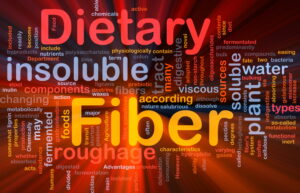Written by Taylor Woosley, Staff Writer. Findings show that risk of dyslipidemia increased with the level of blood Pb but decreased with adequate dietary fiber intake (p = 0.049).
 Dyslipidemia refers to abnormalities in the metabolism of lipoproteins, including triglycerides (TG), total cholesterol (TC), low density lipoprotein cholesterol (LDL-C), and high-density lipoprotein cholesterol (HDL-C), and is a major risk factor for cardiovascular disease (CVD)1. Exposure to lead (Pb) is known to cause various toxic effects and diseases, including dyslipidemia2. Oxidative stress is one of the consequences of heavy metal exposure which is known to cause lipid imbalance and previous research has reported a significant increase in TC, Non-HDL-C, and LDL-C levels with lead exposure in US adult populations3.
Dyslipidemia refers to abnormalities in the metabolism of lipoproteins, including triglycerides (TG), total cholesterol (TC), low density lipoprotein cholesterol (LDL-C), and high-density lipoprotein cholesterol (HDL-C), and is a major risk factor for cardiovascular disease (CVD)1. Exposure to lead (Pb) is known to cause various toxic effects and diseases, including dyslipidemia2. Oxidative stress is one of the consequences of heavy metal exposure which is known to cause lipid imbalance and previous research has reported a significant increase in TC, Non-HDL-C, and LDL-C levels with lead exposure in US adult populations3.
Modifiable risk factors for dyslipidemia include poor dietary habits, inadequate fiber intake, physical inactivity, smoking/tobacco use, chronic inflammation, and excess adiposity4. Dietary fiber is composed of plant substances including non-digestible carbohydrates and lignin that resist digestion by human endogenous enzymes5. The lipid-lowering mechanisms of fiber include prolonged gastric emptying time, the inhibition of hepatic cholesterol synthesis, and an increase in fecal concentration of cholesterol and bile salts6.
Li Bin et al. conducted a cross-sectional study using data from 2128 subjects in the 2011-2016 cycles of the National Health and Nutrition Examination Survey (NHANES). Dyslipidemia was defined through self-reporting of participants, the use of hypolipidemic drugs, or having a TC ≥200 mg/dL, TG ≥150 mg/dL, LDL-C ≥130 mg/dL, and HDL-C <50 mg/dL (female) or <40 mg/dL (male). Heavy metal concentrations were determined using inductively coupled plasma mass spectrometry (ICP-MS). Dietary intake was assessed using a 24-hour dietary recall interview on two non-consecutive days. Potential confounders included in the analysis were age, gender, race, education level, smoking status, alcohol consumption, and physical activity. Further covariates were BMI, waist circumference, diabetes, hypertension, and metabolic syndrome.
A weighted restricted cubic spline analysis was conducted to investigate the dose-response relationship between blood heavy metals and dyslipidemia risk. Of the participants, 51.9% were male and the weighted mean (SE) of age was 44.9 (0.6) years old. Significant findings of the study are as follows:
- After adjusting for potential confounding factors, a significant association between blood Pb levels and dyslipidemia was observed.
- Regarding the dose-response relationship between Pb levels and dyslipidemia risk, results note that when Pb blood levels are higher than 4.24 µg/dL, dyslipidemia risk increased with the increased level of blood Pb.
- Dyslipidemia risk increased with the level of blood Pb but decreased with dietary fiber (p = 0.049).
- After adjusting for confounding factors, results show that among subjects with an inadequate dietary fiber intake, when the level of blood Pb was higher than 3.08 µg/dL, dyslipidemia risk increased with the increased level of blood Pb. This association disappeared in participants with adequate fiber intake.
Results of the study using data from cycles 2011-2016 of NHANES shows a positive association between blood Pb levels and dyslipidemia risk in subjects with inadequate fiber intake. Further research should continue to explore the effect of high blood Pb levels on overall health. Study limitations include the inability to infer causality of study findings due to the study design, the use of dietary recall interviews to assess fiber intake which may result in recall bias, and the inability to analyze the effects of external exposure to Pb on lipid levels.
Source: Li, Bin, Fengzhan Zhang, Haoqi Jiang, Chen Wang, Qihong Zhao, Wanshui Yang, and Anla Hu. “Adequate Intake of Dietary Fiber May Relieve the Detrimental Impact of Blood Lead on Dyslipidemia among US Adults: A Study of Data from the National Health and Nutrition Examination Survey Database.” Nutrients 15, no. 20 (2023): 4434.
© 2023 by the authors. Licensee MDPI, Basel, Switzerland. This article is an open access article distributed under the terms and conditions of the Creative Commons Attribution (CC BY) license (https://creativecommons.org/licenses/by/4.0/).
Click here to read the full text study.
Posted December 4, 2023.
Taylor Woosley studied biology at Purdue University before becoming a 2016 graduate of Columbia College Chicago with a major in Writing. She currently resides in Glen Ellyn, IL.
References:
- Zhao M, Yin G, Xu J, et al. Independent, combine and interactive effects of heavy metal exposure on dyslipidemia biomarkers: A cross-sectional study in northeastern China. Ecotoxicology and environmental safety. Jan 15 2023;250:114494. doi:10.1016/j.ecoenv.2022.114494
- Park H, Kim K. Comparisons among Machine Learning Models for the Prediction of Hypercholestrolemia Associated with Exposure to Lead, Mercury, and Cadmium. Int J Environ Res Public Health. Jul 25 2019;16(15)doi:10.3390/ijerph16152666
- Kim DW, Ock J, Moon KW, Park CH. Association between Heavy Metal Exposure and Dyslipidemia among Korean Adults: From the Korean National Environmental Health Survey, 2015-2017. Int J Environ Res Public Health. Mar 8 2022;19(6)doi:10.3390/ijerph19063181
- Kirkpatrick CF, Sikand G, Petersen KS, et al. Nutrition interventions for adults with dyslipidemia: A Clinical Perspective from the National Lipid Association. J Clin Lipidol. Jul-Aug 2023;17(4):428-451. doi:10.1016/j.jacl.2023.05.099
- Kwon YJ, Lee HS, Park G, Kim HM, Lee JW. Association of Dietary Fiber Intake with All-Cause Mortality and Cardiovascular Disease Mortality: A 10-Year Prospective Cohort Study. Nutrients. Jul 27 2022;14(15)doi:10.3390/nu14153089
- Cicero AFG, Fogacci F, Stoian AP, et al. Nutraceuticals in the Management of Dyslipidemia: Which, When, and for Whom? Could Nutraceuticals Help Low-Risk Individuals with Non-optimal Lipid Levels? Curr Atheroscler Rep. Aug 4 2021;23(10):57. doi:10.1007/s11883-021-00955-y
